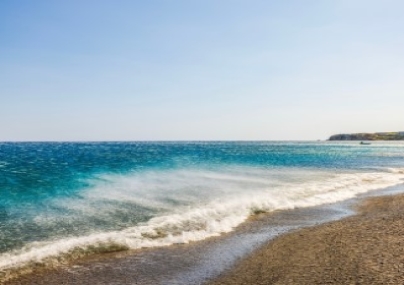Is Malaysia back as a regional oil-and-gas powerhouse? The numbers certainly suggest so. On the back of a number of government initiatives, developments in infrastructure and technologies, and significant private sector investments, the country’s oil and gas sector produced 1.69 million barrels of oil equivalent per day (boe/d), up from 1.64 million boe/d during the same period last year. And Reuters says that a $30 billion push to find more oil and gas is also paying off [see box], with domestic crude output bouncing back from a recent 20-year low, and natural gas production on track to hit a record high before the end of the decade.
There is no doubt Malaysia has a great deal of potential in its oil and gas sector. It is Southeast Asia's second-biggest oil producer, and produces almost 2 percent of the world’s natural gas, accounting for around 13 percent of global LNG exports. It has the third-largest reserves in the Asia-Pacific region after China and India, and its deep-water potential is estimated at 10 billion boe, of which only three billion boe has been discovered so far. But the Malaysian government, which has introduced new incentives to attract more private investment, including a Risk Security Contracts (RSC) scheme under which 25 marginal oilfields were awarded for exploitation, is looking beyond simply increasing oil production. It wants to make Malaysia a global centre for the energy industry.
Despite the strides that Malaysia has made in becoming a regional oil and gas producer, the fact is that economic growth has pushed domestic demand to the point where supply capacity will probably decline in future, not just in Malaysia, but throughout Southeast Asia. And as supply from Southeast Asia dries up, China and other Asian markets will look to Africa, South America and the Middle East to cover the shortfall. The government believes that the region will need an intermediary hub capable of refining and stockpiling oil and other energy sources, and that Malaysia can step up to become this hub, “a regional oil and gas hub in the Asia-Pacific region” by 2017.
Keeping this in mind, the government created the Malaysia Petroleum Resources Corp (MPRC) in 2011. “The MPRC is working with a number of government agencies, state governments and Regional Economic Corridor Authorities to encourage private investments into this sector,” say Dato' Azmi Mohd Ali, senior partner, and Haji Mohd Rasheed Khan Mohd Idris, senior associate, at Malaysian law firm Azmi & Associates. “This includes formulating solutions to address key investor issues such as permits and incentive schemes, as well as tracking the development of key projects.”
One example of this, they say, is a public-private partnership that has been entered into by the Johor State government and Holland’s Royal Vopak and Dialog Group to build an independent deep-water oil storage terminal in Pengerang, Johor. This terminal is part of the Pengerang Industrial Petroleum Complex (PIPC), an industrial complex built on 8,100 hectares of land facing Singapore, that includes oil storage and refining facilities and LNG installations, which in turn is part of the country’s plans to build 10 million cubic metres of storage by 2017 in order to meet the expected growth in demand from China and India. “This [partnership] is the flagship project under one of the Entry Point Projects (EPP) which concretely outlines the actions required to grow the economy, and business opportunities that have been earmarked as areas for potential expansion,” say Dato’ Azmi and Rasheed.
Additionally, the two say that the government, MPRC and the Labuan FSA (the regulatory body for Labuan IBFC), launched the Global Incentives for Trading (GIFT) programme in October 2011. The programme aims to attract oil and gas players to trade petroleum and other petroleum-related projects, while utilising Malaysia as a cost-efficient base to conduct regional trading business. It offers oil and gas firms incentives like tax exemptions, and has led to 10 trading companies registering for the GIFT programme, with a few planning to start transactions in 2013.
Further, the Malaysian Oil & Gas Services Council (MOGSC), an association driven and promoted by the services sector of the Malaysian oil and gas industry, has played an active role in support of the country’s Economic Transformation Programme (ETP) through engagements with the government and various industry stakeholders. MOGSC has also established collaboration platforms with Canada, the EU, the UK and the Netherlands to promote Malaysia as a regional hub for oil and gas services.
PSC to RSC
Dato’ Azmi and Rasheed note that following the energy crisis in 1960-1970, and the need for a greater centralised control of industry, Malaysia established Petronas under the Petroleum Development Act of 1974, and later adopted the Production Sharing Contract (PSC) regime. “However, times have changed as Malaysia is now facing the risk of depletion of its natural oil and gas resources,” they say. “As exploration for more petroleum reserves continues due to the ever increasing energy demand for domestic consumption, Malaysia cannot afford to neglect and ignore the need for developing its existing marginal fields, which produce 30 million barrels of oil equivalent or less. Sources estimate that Malaysia has more than 100 marginal oil fields.” In order to tap into the potential of marginal oil fields, Petronas has come up with the Risk Service Contract (RSC) arrangement in recent years.
“The RSC model strikes a balance in ‘sharing of risks with fair returns’ for development and production of discovered marginal fields with certainty of the hydrocarbon resources having been determined by Petronas,” say Dato’ Azmi and Rasheed. “In this RSC arrangement, Petronas is the project owner while a contractor/oil and gas company will be appointed as the service provider. The upfront development capital will be contributed by the appointed contractor and such capital is fully recoverable from the sale of the hydrocarbon resources. Unlike the PSC, the RSC arrangement does not enjoy the upside from high oil prices, but their risk is limited, and the capital spent will be reimbursed by Petronas.”
Out of the 105 marginal oil fields identified under the ETP, as announced in 2010, 25 oil fields have been marked for development under the new RSC arrangement. Petronas has signed RSC agreements for three marginal oilfields so far, and is expected to award RSCs to potential oil and gas industry players for the remaining 22 from 2013 onwards, with estimated investments of 22 billion ringgit, according to the Business Times.
Building infrastructure
According to Dato’ Azmi and Rasheed, important infrastructure being built includes the Refinery and Petrochemicals Integrated Development (RAPID) project, part of the PIPC. The complex will cover an area of 2,000 hectares and include a 300,000 barrels per day (bpd) crude oil refinery. It will produce nine million tonnes of petroleum products, and 4.5 million tonnes of petrochemicals per year. “Petronas is also exploring the viability of constructing an LNG terminal and a co-generation power plant to support the RAPID project,” they add.
Other than that, they say, two new liquefied natural gas facilities will be built in the northwest region at an investment of around $16 billion. Additionally, Petronas is increasingly looking overseas. The company has said it will invest between $9 and $11 billion to construct LNG liquefaction plants in Lelu Island in British Columbia, Canada while another $5 billion will be invested in a 750 kilometre pipeline to be built by TransCanada Corp for supplying gas to the new plants.
The major obstacle to Malaysia’s plan, say Dato’ Azmi and Rasheed, is that competition from neighbouring countries has heated up in the race to build storage terminals. “China’s Sinopec, which is also Asia’s top refiner, has started work on Southeast Asia’s largest oil storage terminal at the Batam free-trade zone in Indonesia,” they say. “Malaysia must come out with an aggressive plan in order to attract more oil trading companies to move their trading desks to Malaysia.”
Malaysia oil output to rise 2013-2016
Malaysia's $30 billion drive to explore and produce more oil and gas has paid off with its crude and condensate output rising from a 20-year low. Here are the oil projects that are expected to complete expansion or start production between 2013 and 2016:
|
Field |
Location |
Operator/Partners |
Liquids* |
Production |
|
West Desaru and Cendor offshore |
Block PM304, offshore Peninsular Malaysia |
Petrofac, Petronas, Kuwait Foreign Petroleum Exploration Co (KUFPEC), PetroVietnam |
Expand to 25-30 kbpd** from 7-8 kbpd |
End 2013 – Early 2014 |
|
Siaka-North Petai |
Block K, offshore Sabah |
Murphy Oil, ConocoPhillips |
Initial output at 1 kbpd, peak at 30 kbpd |
Late 2013 |
|
Gumusut-Kakap |
Blocks J and K, 120 km offshore Sabah |
Shell, ConocoPhillips, Petronas, Murphy Oil |
Current output 25kbpd, peak at 150kbpd and stabilise at 100-120 kbpd |
Started up in 2012; production to rise in 2014 with new terminal |
|
Malikai |
Part of Block G, about 100 km offshore Sabah |
Shell, ConocoPhillips, Petronas |
60 kbpd peak output |
2016 |
*Liquids: crude and condensate
**kbpd: 1,000 barrels per day
Source: Reuters
Malaysia's $30 billion drive reverses oil decline, boosts gas
By Florence Tan
Malaysia's $30 billion push to find more oil and gas is paying off, with domestic crude output bouncing off a recent 20-year low and natural gas production on track to hit a record high before the end of the decade.
Southeast Asia's second-biggest oil producer expects its crude and condensate output to rise to more than 600,000 barrels-per-day (bpd) in the next five years as new big fields start up and natural decline is stemmed at mature fields.
Malaysia's oil output is not likely to rise much higher than that as most recent finds have been gas, although production of liquids may briefly approach former levels near 700,000 bpd when some of the new fields hit their peaks.
"It'll go above 600,000 bpd of total liquid production from Malaysia and then it will plateau," says Wee Yiaw Hin, the head of exploration and production for state oil and gas company Petronas.
Recent discoveries offshore Sarawak and Sabah, however, could push the country's gas output to a record high by 2020, ensuring Malaysia remains one of Asia's largest suppliers of the liquefied form of the fuel, and easing worries that falling reserves and rising domestic demand could curb LNG exports.
Gas makes up about 60 percent of Malaysia's total oil and gas output, and the shift in production will be increasingly important not only for Petronas, but also to the government, which gets nearly half its budget from the state oil company.
Malaysia's natural gas output is expected to rise to a record seven billion cubic feet per day in 2018, up from about six billion now, according to energy consultancy Wood Mackenzie.
Petronas, which owns and manages Malaysia's oil and gas resources, previously forecast 2013 pre-tax profit of 89 billion ringgit ($29 billion), flat on last year, with lower oil prices offsetting a 2 percent rise in total production.
Aggressive play pays off in gas
Petronas and partners made 24 discoveries last year, including two overseas, adding two billion barrels of oil equivalent to the country's reserves, Wee says.
According to Wood Mackenzie, Malaysia ranked fourth globally in terms of reserves added in 2012.
"We very seldom see a Southeast Asian country in the top 10 and that success is in Sarawak in gas," says Craig McMahon, lead Southeast Asia analyst at Wood Mackenzie.
One of Malaysia's biggest gas finds is in Block SK310 offshore Sarawak, where Newfield Exploration estimates initial gas in place at 1.5 trillion to three trillion cubic feet.
Petronas spent around 93 billion ringgit ($30 billion) over 2008-2011 to reverse falling output, mostly at home. Its success is in sharp contrast to neighbour Indonesia.
Indonesia, Southeast Asia's largest oil and gas producer, has seen its liquids output drop to around 830,000 bpd, about half 1990s levels; while its gas output has dropped to 8.2 billion cubic feet a day, down 12 percent from 2010.
Indonesia has also been pushing to reverse its declining output and setting ambitious targets, but has struggled to attract new international oil and gas investors.
"Petronas is very much the regional poster child when it comes to NOCs (national oil companies)," McMahon says.
Malaysia's revised exploration and development tax treatment attracted ExxonMobil and Royal Dutch Shell, deep-water specialists like Murphy Oil Corp and smaller firms such as Newfield Exploration Co, adds McMahon.
This year, Petronas and its contractors have already made three new discoveries in the first quarter and more are expected, Wee said. "Our exploration programme in Malaysia continues to be very aggressive," he says.
Malaysia was the second-largest LNG exporter in 2012, according to BP's review of world energy, shipping 24 million tonnes from its liquefying plant in Bintulu in Sarawak, mostly to Japan, South Korea and Taiwan.
Petronas plans to make a final investment decision later this year to build a second floating LNG (FLNG) terminal offshore Sabah, while its first FLNG project is still underway.
With a ninth train to be added at Bintulu, a total 6.3 million tonnes per year of new LNG capacity will be onstream in 2015-2016.
With gas output set to rise, Petronas could also renew some expiring term contracts for LNG, McMahon says.
Oil reversal
Much of Malaysia's added oil output will come from the Shell-operated Gumusut-Kakap and Malikai fields offshore Sabah.
Gumusut-Kakap alone will add up to 120,000 bpd when the Sabah Oil and Gas Terminal in Kimanis is completed next year, Petronas' Wee says.
"In the next three to five years, we will be able to sustain or even grow our production from these new projects," Wee adds.
Malaysia's liquids output in 2012 was at 586,000 bpd, according to Petronas. It fell to its lowest in 20 years at 569,000 bpd in 2011.
Follow us onTwitter: @ALB_Magazine.
.jpg) On the back of a number of government initiatives, developments in infrastructure and technologies, and significant private sector investments, the country’s oil and gas sector produced 1.69 million barrels of oil equivalent per day (boe/d), up from 1.64 million boe/d during the same period last year. And Reuters says that a $30 billion push to find more oil and gas is also paying off [see box], with domestic crude output bouncing back from a recent 20-year low, and natural gas production on track to hit a record high before the end of the decade.
On the back of a number of government initiatives, developments in infrastructure and technologies, and significant private sector investments, the country’s oil and gas sector produced 1.69 million barrels of oil equivalent per day (boe/d), up from 1.64 million boe/d during the same period last year. And Reuters says that a $30 billion push to find more oil and gas is also paying off [see box], with domestic crude output bouncing back from a recent 20-year low, and natural gas production on track to hit a record high before the end of the decade.

